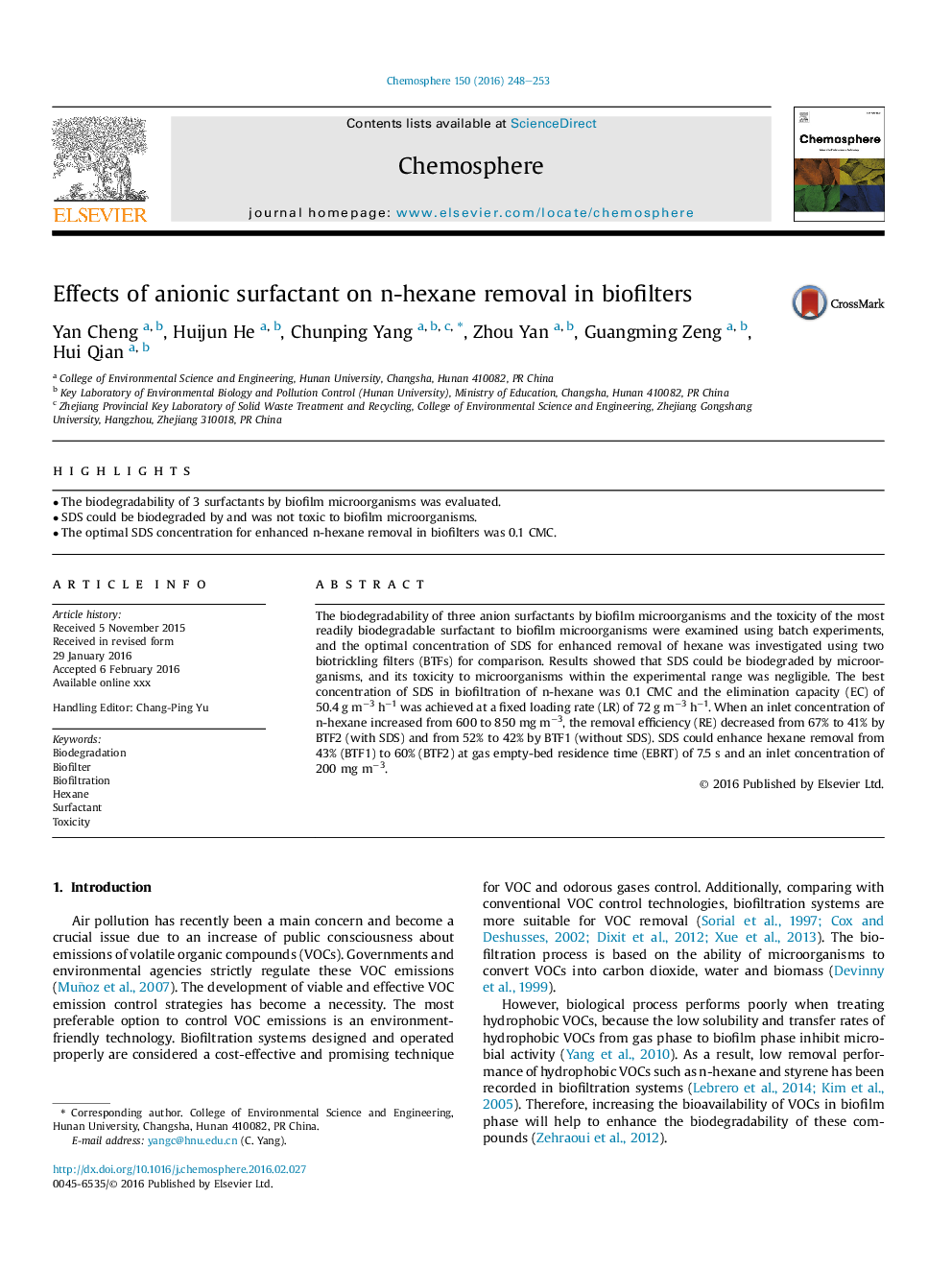| Article ID | Journal | Published Year | Pages | File Type |
|---|---|---|---|---|
| 6306830 | Chemosphere | 2016 | 6 Pages |
Abstract
The biodegradability of three anion surfactants by biofilm microorganisms and the toxicity of the most readily biodegradable surfactant to biofilm microorganisms were examined using batch experiments, and the optimal concentration of SDS for enhanced removal of hexane was investigated using two biotrickling filters (BTFs) for comparison. Results showed that SDS could be biodegraded by microorganisms, and its toxicity to microorganisms within the experimental range was negligible. The best concentration of SDS in biofiltration of n-hexane was 0.1 CMC and the elimination capacity (EC) of 50.4 g mâ3 hâ1 was achieved at a fixed loading rate (LR) of 72 g mâ3 hâ1. When an inlet concentration of n-hexane increased from 600 to 850 mg mâ3, the removal efficiency (RE) decreased from 67% to 41% by BTF2 (with SDS) and from 52% to 42% by BTF1 (without SDS). SDS could enhance hexane removal from 43% (BTF1) to 60% (BTF2) at gas empty-bed residence time (EBRT) of 7.5 s and an inlet concentration of 200 mg mâ3.
Related Topics
Life Sciences
Environmental Science
Environmental Chemistry
Authors
Yan Cheng, Huijun He, Chunping Yang, Zhou Yan, Guangming Zeng, Hui Qian,
